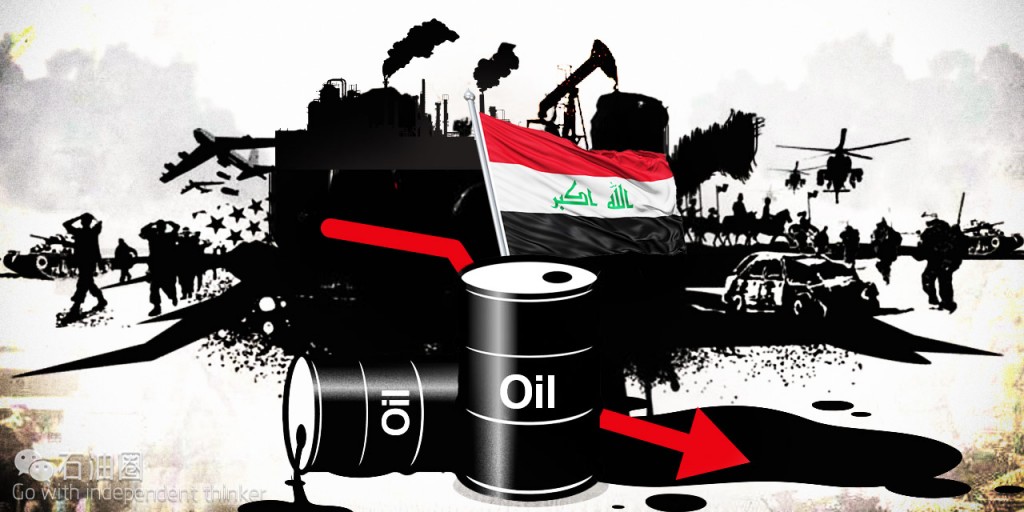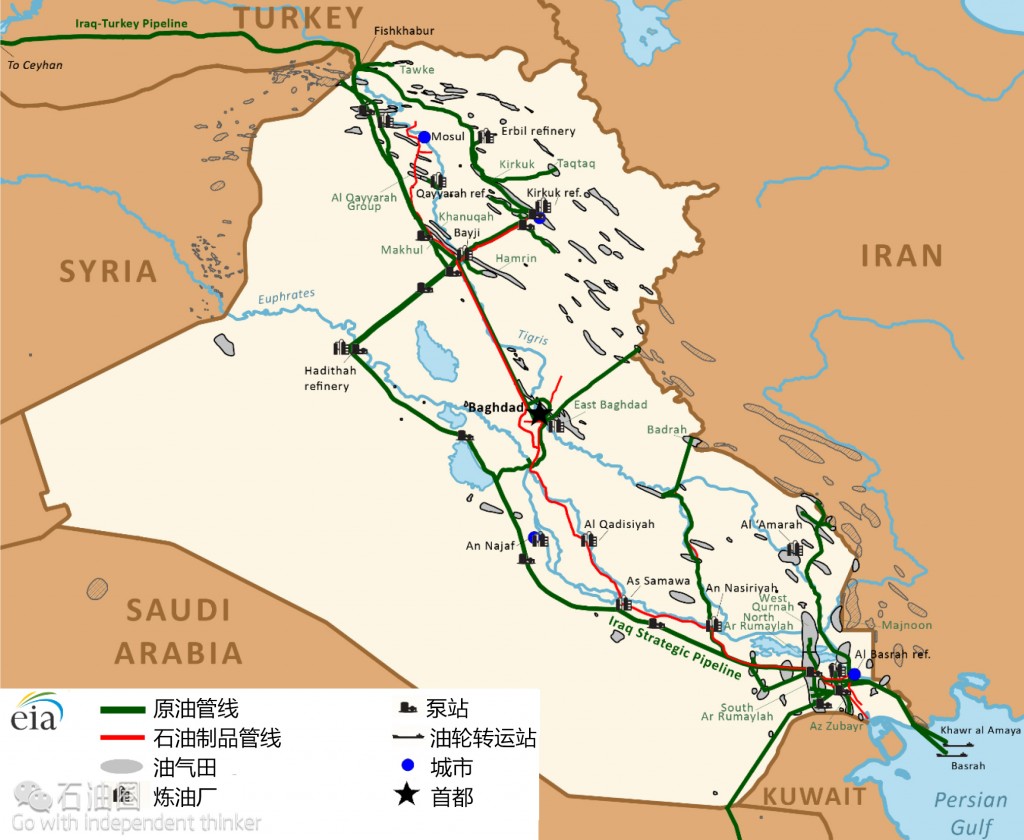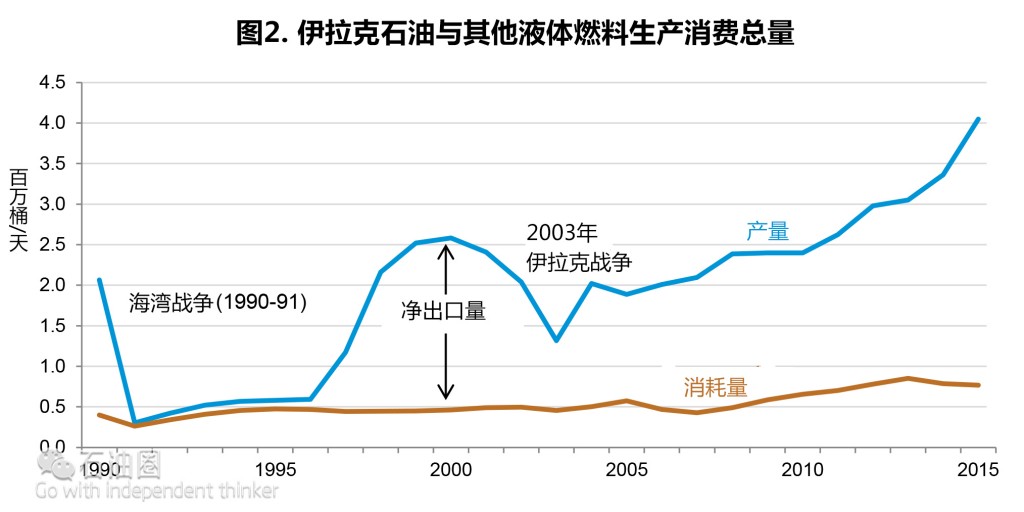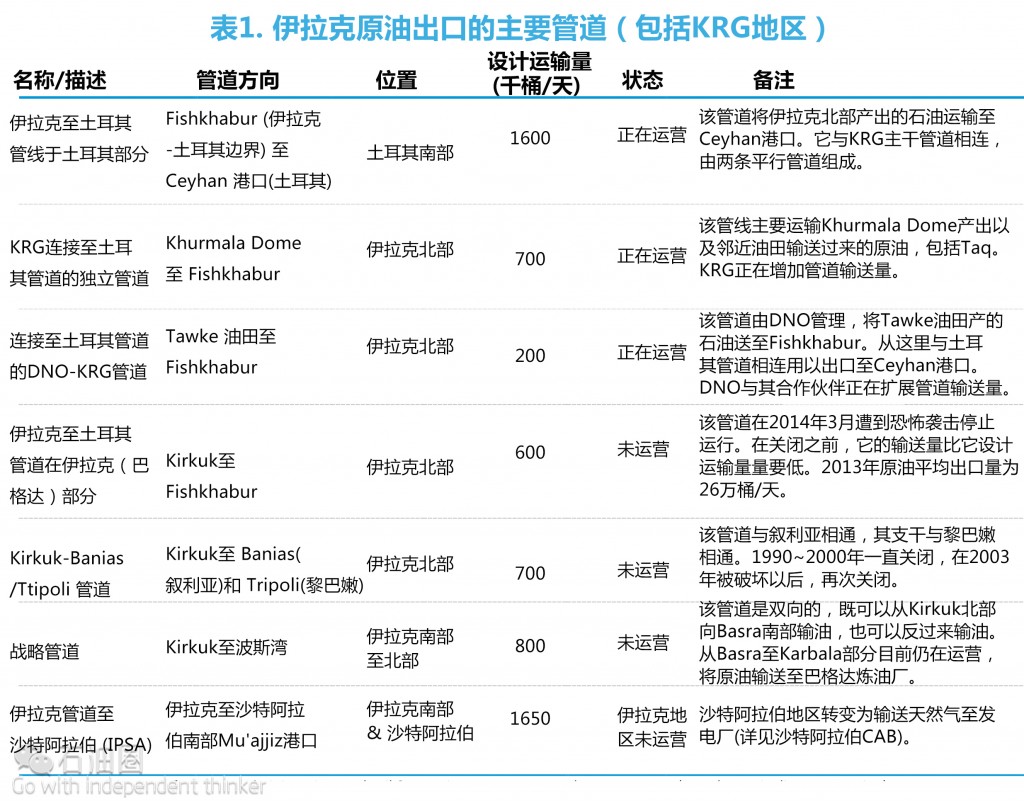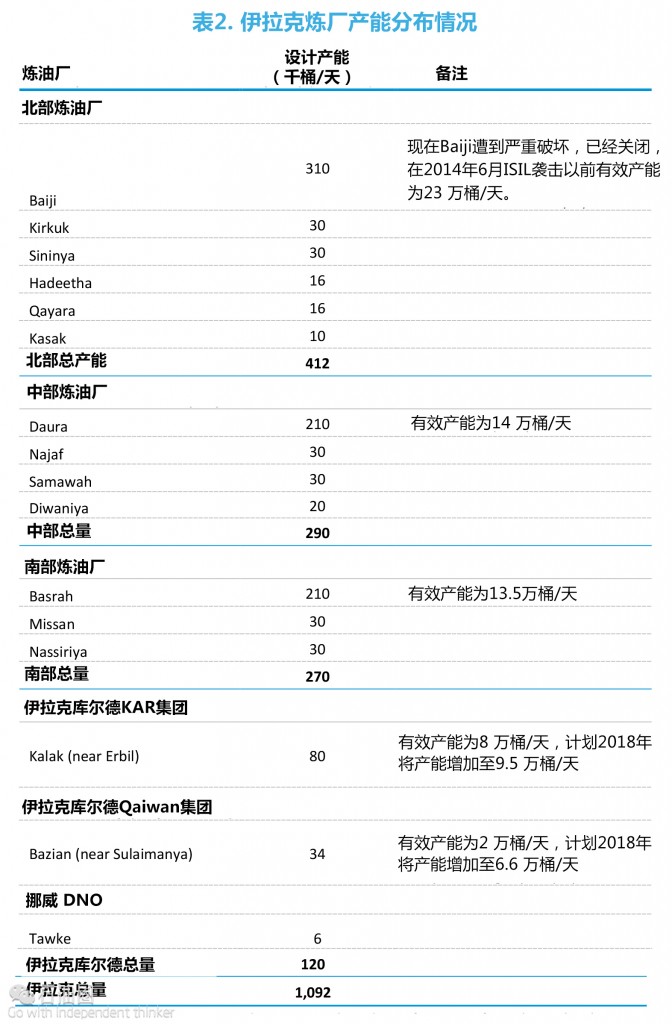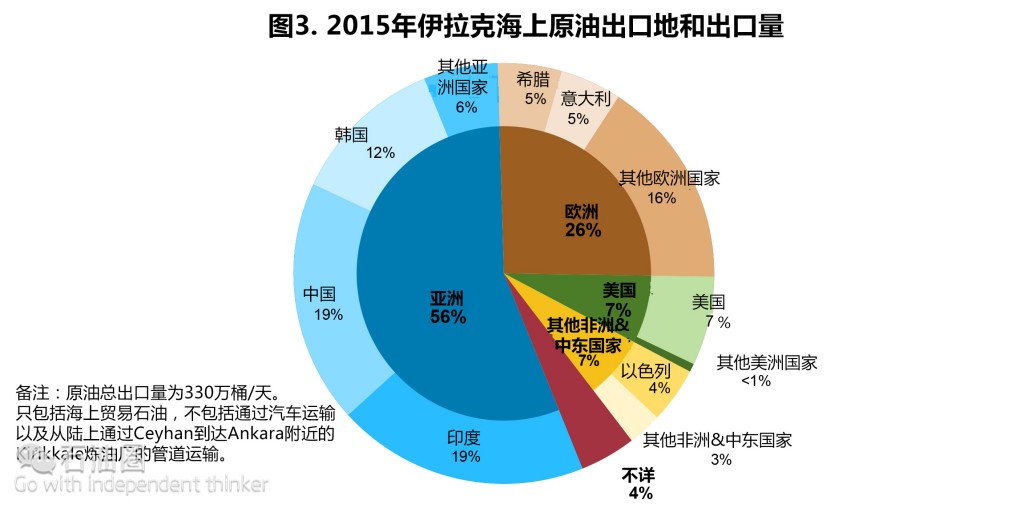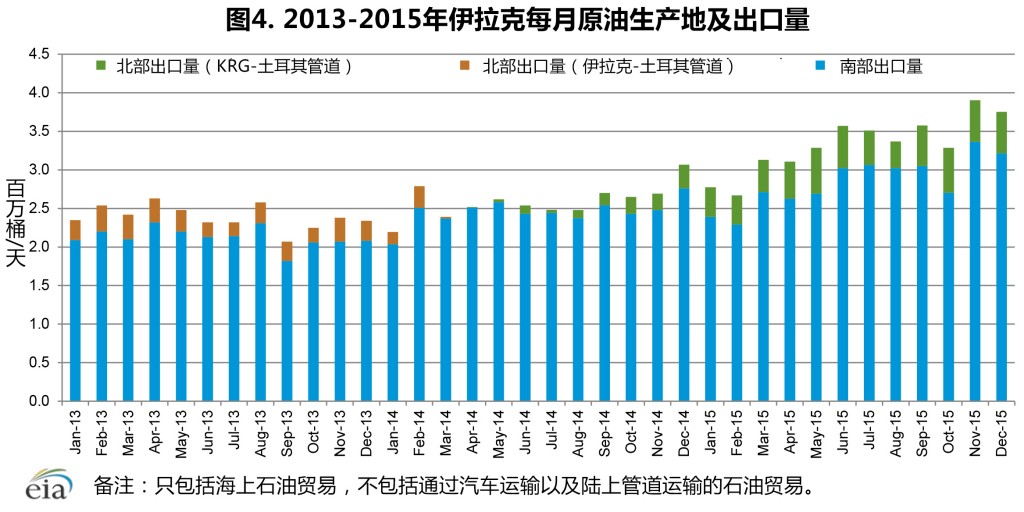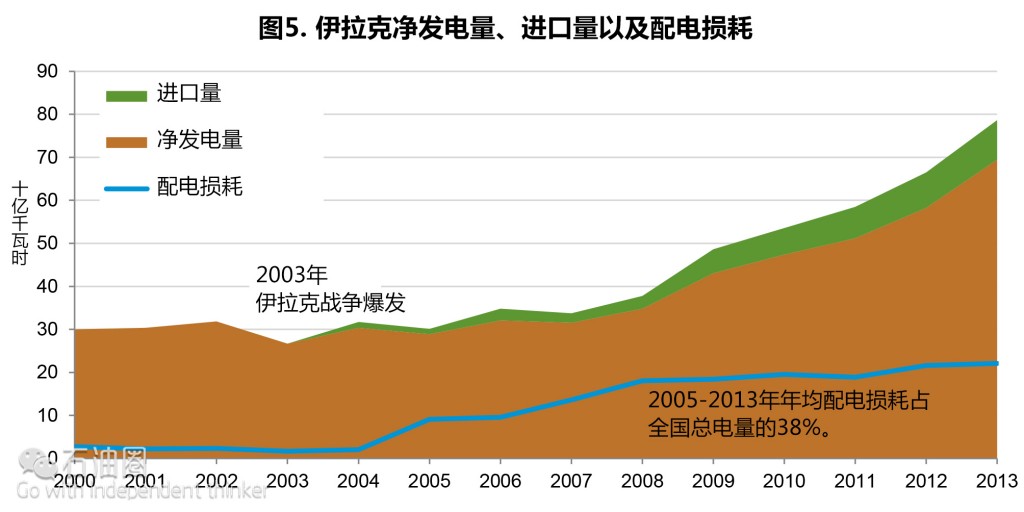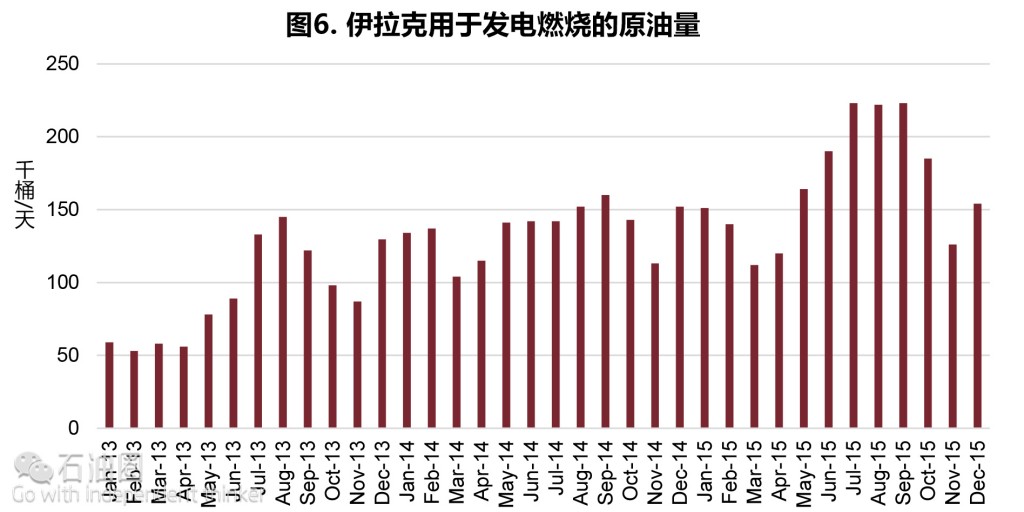Iraq is OPEC’s second-largest crude oil producer and holds the fifth-largest proved crude oil reserves in the world.
Iraq is the second-largest crude oil producer in the Organization of the Petroleum Exporting Countries (OPEC) after Saudi Arabia, and it holds the world’s fifth-largest proved crude oil reserves after Venezuela, Saudi Arabia, Canada, and Iran. Most of Iraq’s major known fields are producing or in development, although much of its known hydrocarbon resources have not been fully exploited. All of Iraq’s known oil fields are onshore. The largest fields in the south have relatively low extraction costs owing to uncomplicated geology, multiple supergiant fields, fields located in relatively unpopulated areas with flat terrain, and the close proximity of fields to coastal ports.
Iraq is re-developing its oil and natural gas reserves after years of sanctions and wars. Iraq’s crude oil production grew by almost 1.5 million barrels per day (b/d) over the past five years, increasing from 2.6 million b/d in 2011 to almost 4.1 million b/d in 2015. These production estimates include oil produced in the Iraqi Kurdistan Region, the semiautonomous northeast region in Iraq governed by the Kurdistan Regional Government (KRG). The country’s production grew at a slower rate than the Iraqi government had expected over the past decade because of infrastructure bottlenecks in the south, supply disruptions in the north, and delays in awarding contracts. However, Iraq’s production boomed in 2015, increasing by almost 700,000 b/d compared with the level in 2014 and representing the largest year-over-year increase since Iraq’s production recovery in 2004, following the start of the Iraq war.
Despite the near-record level production growth in 2015, the Iraqi government lowered its future oil production targets and slashed investment plans. Iraq has been struggling to keep up its share of payments to the international oil companies (IOCs) operating its oil fields. The drop in crude oil prices, coupled with the war against the Islamic State of Iraq and the Levant (ISIL) in northern Iraq that began in mid-2014, caused Iraq’s budget deficit to grow substantially in 2015.
Iraq’s economy is heavily dependent on oil revenues. In 2014, crude oil export revenue accounted for 93% of Iraq’s total government revenues, according to the International Monetary Fund (IMF). In 2015, Iraq (excluding KRG) earned slightly more than $49 billion dollars in crude oil export revenue, $35 billion less than in 2014, despite a substantial increase in export volumes.
Petroleum and other liquids
Iraq holds 18% of proved crude oil reserves in the Middle East and almost 9% of total global reserves. Most of Iraq’s major known oil fields are producing or in development, although much of its known hydrocarbon resources have not been fully exploited.
Reserves
According to the Oil & Gas Journal (OGJ), Iraq held 143 billion barrels of proved crude oil reserves at the end of 2015, representing 18% of proved reserves in the Middle East and almost 9% of global reserves, ranking fifth in the world. Iraq’s resources are not evenly divided across sectarian-demographic lines. Most known oil and natural gas resources are concentrated in the Shiite areas of the south and the ethnically Kurdish region in the north, with few known resources in control of the Sunni minority in central/western Iraq.
Iraq has five super giant fields (defined as holding more than 5 billion barrels of oil reserves) in the south that account for about 60% of the country’s total proved oil reserves. An estimated 17% of oil reserves are in northern Iraq, near Kirkuk, Mosul, and Khanaqin. Control over rights to reserves is a source of controversy between the ethnic Kurds and other groups in the area. The International Energy Agency (IEA) estimated that the Iraqi Kurdistan Region contained 4 billion barrels of proved reserves. KRG’s estimate is much higher because it includes unproved resources. The KRG estimates that it holds 45 billion barrels, although this number has not been independently verified and likely includes at least some resources in disputed areas—especially Kirkuk.
Sector Management
The Ministry of Oil in Baghdad oversees oil and natural gas development and production in all but the Kurdish territory through its operating entities: the North Oil Company (NOC) and the Midland Oil Company (MDOC) in the north and central regions, and the South Oil Company (SOC) and the Missan Oil Company (MOC) in southern regions. In the Iraqi Kurdistan Region, the KRG, with its Ministry of Natural Resources, oversees oil and gas development and production. International oil companies (IOCs) are very active in Iraq, including the Iraqi Kurdistan Region. IOCs operate under technical service contracts (TSCs) in Iraq, which are signed with the Ministry of Oil in Baghdad, and under production-sharing agreements (PSAs) in the Iraqi Kurdistan Region signed with the KRG. Over the years, KRG’s push to sign PSAs with IOCs has escalated tensions with Baghdad, making the situation uncomfortable for some IOCs that have been pressured on different occasions to reduce their investments in Kurdistan.
Production
Iraq’s crude oil production averaged nearly 4.1 million b/d in 2015, 700,000 b/d more than the production level in 2014 (Figure 2). Of the amount produced in 2015, almost 3.6 million b/d was produced in southern Iraq under the central government in Baghdad and 450,000 b/d was produced in northern Iraq, most of which were at fields operated by the KRG and the remainder at fields operated by the North Oil Company of Iraq (Baghdad).
In southern Iraq, where nearly 85% of the country’s oil was produced in 2015, the upgrade of midstream infrastructure (pipeline pumping stations and storage facilities) and improvements to crude quality contributed to increased production. In June 2015, Iraq started marketing Basra heavy grade crude oil, distinguishing it from the Basra crude it had traditionally marketed as a light crude oil. Before this distinction, Iraq limited production at oil fields producing heavy oils to maintain the minimum standard for the light grade Basra crude oil. Once Iraq began marketing Basra heavy separate from Basra light, Iraq was able to increase production at fields producing the heavier oil and improve the quality of Basra light. In northern Iraq, where the remaining 10% of Iraq’s oil was produced in 2015, the KRG increased the capacity of its independent pipeline, allowing output to increase.
EIA expects Iraq’s production growth to slow in 2016 because budget constraints have prompted the Iraqi government to request that IOCs operating in the south to reduce spending plans. The KRG is also experiencing budgetary constraints that are causing payment delays to IOCs, which could also contribute to slowing production growth.
Impact of ISIL on Iraq’s oil sector
The Islamic State of Iraq and the Levant (ISIL) launched an attack in Iraq in early June 2014, taking over Mosul, one of the largest cities in the north, and subsequently other nearby towns. ISIL affected northern Iraqi (not including the Iraqi Kurdistan Region) production and refinery operations, but it did not affect southern production and exports, which accounted for about 95% of Iraq’s total crude oil exports in 2014. ISIL did not significantly affect production in the Iraqi Kurdistan Region in northern Iraq, although fighting came very close to fields produced under the KRG—the Khurmala Dome and Shaikan. Some oil companies were forced to abandon exploration projects, which could delay future development.
During the second half of June 2014, ISIL attacked Baiji, Iraq’s largest oil refinery, causing the refinery to halt operations. The closure of the Baiji refinery caused a near halt to commercial production in northern Iraq (not including the Iraqi Kurdistan Region). The Iraq portion of the Iraq (Kirkuk) to Turkey (Ceyhan) pipeline (IT pipeline) had already been severely damaged after being sabotaged by militants, and it has not operated since March 2014. As a result of the closure of both the Baiji refinery and the Iraq portion of the IT pipeline, northern Iraqi oil production (the Kirkuk and Bai Hassan fields) lacked a significant commercial outlet for several months.
ISIL initially took over some smaller northern Iraqi oil fields, including Ajeel, Hamrin, Qayara, Balad, Ain Zalah, Batma, and Najma, but ISIL later lost control of some of those fields following the U.S.-led air strikes that began in early August 2014. The Ajeel field, with a capacity of 28,000 b/d, was one of ISIL’s main sources of Iraq’s production, but it was bombed in August 2014, causing significant damage to the field’s control room. ISIL has also stolen oil from storage tanks, pipelines, and pumping stations, estimated to be as high as 3.0 million barrels. Currently, ISIL is believed to be producing a small amount of oil at Iraq’s northern Qayara field.
Field Development Plans
Iraq is undertaking an ambitious program to develop its oil fields and to increase its oil production. After two licensing rounds between 2008 and 2009, the Iraqi Ministry of Oil signed a dozen long-term technical service contracts (TSC) with IOCs to develop or re-develop several giant oil fields, most of which were already producing. However, these development plans are now in flux because of the economic crisis in Iraq caused by the sustained low oil prices and war against ISIL.
Iraq continues to lower its ambitious oil production targets. When the TSCs were signed, Iraq and the IOCs had set ambitious initial production plateau targets for the dozen oil fields, totaling more than 12 million b/d to be completed by 2017. However, the contracts have been re-negotiated to more modest levels and Iraq may have to lower the targets again. After lowering the target to about 9.0 million b/d by 2015, Iraq may lower the target down to 6.0 million b/d if oil prices continue to be low.
In the Iraqi Kurdistan Region, the KRG has also lowered its ambitious production targets. Previously, it planned to increase production and pipeline capacity to 1.0 million b/d by the end of 2015 or early 2016.However, the KRG is now targeting that amount for the end of 2016. Project delays caused by the ISIL offensive and past non-payment of IOCs for work performed make it unlikely this goal will be achieved.
Infrastructure Constraints
Southern exports
In 2015, Iraq substantially expanded onshore pumping and storage infrastructure in the south. Iraq will have to continue to expand infrastructure capacity in the south to accommodate more production growth. Iraq has also expanded the capacity of southern export facilities in recent years by adding on three single point moorings (SPMs) near the Basra and Khor al-Amaya ports. Iraq also plans to continue to increase its export capacity to meet ambitious production targets. Three SPMs buoyed off the Basra port are currently operational, a fourth SPM was installed in early 2015 but is not operational, and a fifth SPM is scheduled to be installed in 2016. The SPMs have a nameplate (design) loading capacity of 900,000 b/d each, although actual loadings are typically much less. The SPMs have added much needed shipping capacity to the south, as the Basra and Khor al-Amaya ports are operating well below capacity after enduring three wars and poor maintenance.
Common Seawater Supply Project
Production increases of the scale planned will also require substantial increases in natural gas and/or water injection to maintain enough reservoir pressure to increase recovery rates and boost oil production. Iraq has associated natural gas that could be used for reinjection, but much of the natural gas is currently being flared. According to Cedigaz, Iraq was the world’s fourth-largest natural gas-flaring country in 2014, behind Russia, Iran, and Venezuela. Iraq is working with its international partners and the World Bank to reduce gas flaring. The gas will be prioritized first for electricity generation.
Iraq plans to rely primarily on water injection to reach future production plateau targets. Iraq’s South Oil Company (SOC) is undertaking the Common Seawater Supply Project (CSSP), estimated to cost between $4 billion and $6 billion, which entails treating seawater from the Persian Gulf and then transporting it via pipelines to oil production facilities. The CSSP will supply 7.5 million b/d of water by the end of Phase 1 and up to 12 million b/d by the end of Phase 2, although the amount of water may change depending on the renegotiated production targets. The water will be sent to at least five southern Basra fields and one field in the Missan province. Generally, Iraq’s major southern oil fields require 1.5 barrels of water injected to produce 1 barrel of oil.
It is unclear when CSSP Phase 1 will commence, but it most likely will not be complete before 2018, with some estimates being 2020.Planning for CSSP began in 2009, and it was slated to start in 2013, delivering 12 million b/d of water to major southern oil fields. The anticipated project start year has been pushed back a few times due to change in management, administrative delays, and financing hurdles. ExxonMobil was initially set to lead the CSSP, however, that didn’t go through because of Exxon’s investment plans in the Iraqi Kurdistan Region and disagreements over cost estimates. The U.S. engineering company CH2M Hill was subsequently awarded the position as project consultant in December 2012.
CSSP’s current status is still in flux. Iraq’s SOC has asked that ExxonMobil and PetroChina (a subsidiary of China National Petroleum Corporation-CNPC) help fund the project and provide expertise. Negotiations between SOC and the two companies are underway to decide the role that they will play in moving CSSP forward. Meanwhile, two Front-End Engineering Designs (FEED) are in progress for the water intake and processing facilities onshore and offshore of Basra and for the pipelines that will deliver the water to the onshore oil fields.
Electricity
Iraq’s oil and gas industry is the largest industrial customer of electricity in Iraq. Large-scale increases in oil production would also require large increases in electric power generation. However, Iraq has struggled to keep up with the demand for electricity, with shortages common across the country. Significant upgrades to the electricity sector would be needed to supply additional power. Delays in meeting projected targets may mean insufficient power supply to meet the projected demands of the oil sector.
Northern exports
Most of Iraq’s major crude oil pipelines are located in the north and are currently not operable (Table 1).The pipelines have suffered substantial damage because of conflict and war, and rehabilitation would take years and a large investment. The Iraq portion of the Iraq to Turkey (IT) pipeline stopped operating in March 2014, following several attacks by militants. Given the extremely unstable environment along the pipeline and the extent of the pipeline’s damage, operations are unlikely to resume in the foreseeable future.
Currently, the only working major export-oriented pipelines in northern Iraq are two pipelines built by the KRG and its international partners: KRG’s main pipeline and the DNO/Tawke pipeline, both of which link to the Turkey pipeline to the Ceyhan port. Several smaller pipelines carry crude oil from other fields to KRG’s main pipeline.
Oil Consumption and Refining
In 2015, Iraq consumed 770,000 b/d of petroleum and other liquids. Iraq’s oil consumption, which grew by an annual average of 7% from 2004 to 2013, declined slightly in 2014 and again in 2015 mostly because of the 2014 ISIL offensive in northern Iraq that led to the shutdown of Iraq’s largest refinery and fuel shortages in northern Iraq. Most of Iraq’s petroleum consumption derives from its domestic oil refineries, which are fueled by domestically produced oil. Iraq typically imports roughly 100,000 b/d of petroleum products. Iraq also burns crude oil directly at power plants. In 2015, crude oil burn averaged 168,000 b/d (see Electricity section).
Total nameplate (design) refinery capacity in Iraq is more than 1.0 million b/d (Table 2).Refinery capacity estimates vary because effective capacity (what is actually available to use) has fallen below nameplate capacity at many refineries. Before the June 2014 ISIL attack on the Baiji refinery, effective refining capacity in Iraq (including the Iraqi Kurdistan Region) was almost 800,000 b/d. But with the Baiji refinery not being operational, Iraq’s total effective capacity is now estimated below 600,000 b/d.
Iraqi refineries produce more heavy fuel oil than is needed domestically and not enough of other refined products, such as gasoline. Iraq plans to build four new refineries and expand capacity at some existing refineries to alleviate domestic product shortages and to eventually export refined products. The planned new refineries and capacity expansions would add 800,000 b/d of refining capacity. Most of these projects will probably come online sometime after 2018. The KAR Group, a private company that operates the largest refinery in the Iraqi Kurdistan Region, is planning to build a new refinery in the Ninewa province with a planned design capacity of 60,000 b/d.
Issues between the Kurdistan Regional Government and Baghdad
The Kurdistan Regional Government (KRG), the official ruling body of the semiautonomous region in northern Iraq that is predominantly Kurdish, has been involved in disputes with national authorities related to sovereignty. The plan by Iraq’s North Oil Company (NOC) to boost production at the Kirkuk field in northern Iraq at the edge of the KRG region has been met with objections by the KRG, which insists that development plans at this field require KRG cooperation and approval.
More generally, the Iraqi Ministry of Oil insists that all hydrocarbon contracts must be signed with the national government, and that all oil produced in the KRG region be marketed and shipped via State Oil Marketing Organization (SOMO), Iraq’s oil exporting arm. However, the KRG passed its own hydrocarbons law in 2007 in the absence of a national Iraqi law governing investment in hydrocarbons. In late 2011, the KRG challenged the authority of the national government when it signed oil production-sharing agreements with ExxonMobil to develop blocks in northern Iraq, some of which are in disputed border areas. The KRG has since signed additional contracts with major oil producers such as Chevron, Gazprom, and Total. ExxonMobil withdrew from some of its projects in Iraq, notably the Common Seawater Supply Project, and the company had been asked by the Iraqi government to choose between its involvement in the West Qurna1 oilfield and its projects in the KRG. Turkish Petroleum Corporation (TPAO) had also been asked to withdraw from its involvement in the Block 9 concession that was awarded during the fourth bidding round because of disputes regarding Turkey’s involvement in KRG energy projects.
Past agreements to export oil independently and via Iraqi state-owned infrastructure from Iraqi Kurdistan have fallen apart because of payment disagreements, security problems, and delays building infrastructure required to transport the amounts of oil promised. Oil exports directly from the KRG have been another contentious issue. The KRG has been exporting crude oil and condensate to Turkey and Iran by truck. In May 2014, the KRG started exporting crude oil via a newly built independent pipeline to Turkey’s Ceyhan port.
Northern production
Oil production in northern Iraq is a contentious topic because of an ongoing dispute between the central Iraqi government in Baghdad and the KRG over the vast amount of oil resources in the Kirkuk structure. The tension and confusion over northern production has escalated since the ISIL offensive in 2014. Before 2014, Iraq (Baghdad) produced most of the oil in the north, mainly at the Kirkuk field (Avana and Baba Domes) and Bai Hassan field, along with other smaller fields. However, after the closure of the IT pipeline in March 2014 and the Baiji refinery in June 2014, northern production lacked its traditional commercial outlets. As a result, the KRG took over operations at the Avana Dome, a part of the Kirkuk field, and Bai Hassan in July 2014 and started exporting the oil through its newly built independent pipeline to Ceyhan, Turkey (Table 1). During this time, Baghdad’s NOC continued to operate some of the northern fields, although the production was exported via KRG’s pipeline and marketed by the KRG.
The KRG began transferring some of the crude oil at Turkey’s Ceyhan terminal to SOMO in late 2014 in accordance with a deal made between Baghdad and the KRG in December 2014. The two sides agreed that: (1) the KRG give 250,000 b/d of the crude oil produced in its territory to SOMO at the Ceyhan terminal to market the crude, (2) Iraq (Baghdad) export 300,000 b/d of Kirkuk crude through KRG’s pipeline to Ceyhan, and (3) Iraq (Baghdad) resume federal payments to the KRG that will amount to a 17% share of Iraq’s federal budget and pay KRG’s Peshmerga military forces $1 billion. The deal was intended to allow SOMO to reclaim marketing control over much of Iraq’s northern crude exports.
The deal has since collapsed. KRG oil allotments to SOMO decreased substantially in June 2015 and the last one was given in August 2015. The KRG started to directly sell all northern oil because it was receiving much less than the 17% of the overall federal budget from Baghdad. In response, in March 2016, the federal NOC stopped pumping oil into KRG’s pipeline, upon guidance from Baghdad, in an attempt to leverage negotiations on northern oil revenue sharing with the KRG. The NOC-operated fields were producing between 150,000 and 200,000 b/d, of which now most is being reinjected into the oil wells to maintain natural gas production for local power generation.
Crude Oil Exports
In 2015, India was the largest importer of Iraqi crude oil, importing slightly more than China. About 85% of Iraq’s crude oil exports came from the country’s southern export terminals along the Persian Gulf in 2015, which export Iraq’s Basra light and heavy crude grades.
Total Iraqi crude oil exports averaged 3.3 million b/d in 2015, 0.7 million b/d higher than the previous year, based on Lloyd’s List Intelligence (APEX tanker data) and data from the Iraqi Ministry of Oil (Figure 3).The expansion of onshore pumping and storage infrastructure in the south, improvements in crude quality as Basra Light and Basra Heavy were marketed separately starting in mid-2015, and an increase to the KRG’s pipeline capacity in the north all contributed to production growth in Iraq. In 2015, about 85% of Iraq’s exports were shipped from its southern export terminals in the Persian Gulf, which exports both the Basra light and heavy crude oil grades (Figure 4).
Asia (led by India, China, and South Korea) is the main regional destination for Iraq’s crude oil, importing more than half of the total exports in 2015. India imported slightly more crude oil from Iraq than China, making India the largest importer of Iraqi crude oil in 2015. Outside of Asia, the United States is the largest importer of Iraq’s crude oil, although the volume has fallen over the past decade. The United States imported 229,000 b/d of crude from Iraq in 2015, more than 70% lower than the volume received at its peak in 2001. The growth in U.S. oil production has resulted in a sizable decline in U.S. imports.
The crude export estimates in Figures 3 and 4 include only seaborne trade crude oil. The estimates exclude crude oil transported by truck and volumes exported inland to Turkey via an onshore pipeline from the Ceyhan terminal to Turkey’s Kirikkale refinery, near Ankara. The Ceyhan to Kirikkale pipeline has a capacity of 135,000 b/d, although transported volumes often fall below that amount.
Note: Total crude oil exports are 3.3 million b/d. Exports only include seaborne traded crude oil, not crude oil exported by truck or crude exported onshore Turkey via the Ceyha-Kirikkale pipeline to a refinery near Ankara.
Natural gas
Iraq was the world’s fourth-largest natural gas-flaring country in 2014, as more than half of its gross natural gas production was flared. Iraq is taking steps to reduce flaring and instead use its natural gas resources more for power generation and for reinjection into wells to enhance oil recovery.
Reserves
At nearly 112 trillion cubic feet (Tcf), Iraq’s proved natural gas reserves at the end of 2015 were the 12th largest in the world, according to the OGJ. About three-quarters of Iraq’s natural gas reserves are associated with oil, most of which lie in the supergiant fields in the south.
Production and Consumption
Iraqi gross natural gas production was 771 billion cubic feet (Bcf) in 2014, of which 454 Bcf was flared, according to OPEC’s Annual Statistical Bulletin. In 2014, Iraq was the fourth-largest natural gas-flaring country in the world, behind Russia, Iran, and Venezuela. Natural gas is flared because of insufficient pipelines and other infrastructure to transport and store it for consumption and/or export. Natural gas that is not flared is used mostly for reinjection into oil wells to improve oil recovery rates. Iraq commercially consumed almost 32 Bcf of dry natural gas in 2012, which was used primarily in the electricity sector.
To reduce flaring, Iraq’s state-owned South Gas Company (51%) signed an agreement with partners Royal Dutch Shell (44%) and Mitsubishi (5%) to create a new joint venture, Basrah Gas Company, to capture flared gas at three large southern oil fields—Rumaila, West Qurna 1 and Zubair. The 25-year venture, which is estimated to cost $17 billion, entails upgrading current facilities and building new facilities and processing plants to increase natural gas processing capacity to 2 Bcf per day by 2018. Iraq and Royal Dutch Shell recently made some progress utilizing associated natural gas that was previously flared at the supergiant Majnoon oil field in Basra operated by Royal Dutch Shell (45%), in partnership with Malaysia’s Petronas (30%) and Iraq’s Missan Oil Company (25%). Starting in February 2016, associated gas produced at Majnoon is being sent to processing facilities in Basra to produce 300 megawatts of electricity for Iraq’s power grid.
In the long term, the joint venture is considering the construction of a liquefied natural gas (LNG) exporting facility, the Basra Gas LNG Project. Under the agreement, processed gas would go first to the South Gas Company for power generation. Any gas not bought for use by Iraqi power plants could be exported via the LNG plant. The implementation of this agreement is also necessary for the new oil development projects, which would use some of the natural gas for reinjection.
Iraq held its third bidding round in late 2010, for three nonassociated natural gas fields (Akkas, alMansuriyah, and Siba), with combined gas resources of more than 11 Tcf. The Akkas field is located in the volatile western part of the country, where attacks have disrupted operations in the past. In June 2014, the ISIL offensive in northern Iraq disrupted operations at both the Akkas and al-Mansuriyah fields.
Export/Pipeline Ambitions
Plans to export natural gas remain controversial because natural gas is needed as feedstock for Iraq’s electric power plants. The shortage of adequate gas has resulted in idle and suboptimal electricity generation in Iraq.
Prior to the 1990-91 Gulf War, Iraq exported natural gas to Kuwait. The gas came from the Rumaila field through a 105-mile, 400 million cubic feet per day pipeline to Kuwait’s central processing center at Ahmadi. Iraq’s Ministry of Oil has discussed reviving the mothballed pipeline, but there are no firm plans. The Iraqi government has also considered proposals to build a transcontinental pipeline to export natural gas to Europe via nearby countries, but there are no firm plans.
Electricity
While Iraq has increased its electricity generation capacity over the past few years, electricity generation expansion has slowed because of the economic crisis in the wake of the war against ISIL and low oil prices. Continued expansion is essential, particularly for the summer months when peak demand can exceed generation by almost 50%.
Iraq’s electricity supply totaled almost 79 billion kilowatthours (kWh) in 2013, of which more than 69 billion kWh was generated from domestic power plants and more than 9 billion kWh was imported from Iran and Turkey. Electricity net generation in Iraq grew by an annual average of 15% from 2009 to 2013, recovering from the 2003 dip in electricity generation associated with the start of the Iraq war. Although generation in Iraq has increased, distribution losses have also increased. From 2005 to 2013, distribution losses averaged 38% of total electricity supply (Figure 5). Iraq’s distribution system, outside the Iraqi Kurdistan Region, has deteriorated because of poor design, lack of maintenance, and electricity theft, resulting in large distribution losses, low voltage levels, and frequent disconnections.
Iraq has struggled to meet its power needs during the Iraq war and for the postwar period. Like many developing countries in the Middle East and North Africa, Iraq faces a sharply rising demand for power. From 2003 to 2011, power outages lasting 16 to 22 hours per day were common. Although many parts of Iraq, outside the Iraqi Kurdistan Region, still suffer from power blackouts and load shedding particularly during the summer, the problems have been reduced somewhat as both on-grid and off-grid generation capacity has increased, along with electricity imports from Iran and from Turkish electricity barges (floating power plants) in the Persian Gulf.
Peak summer demand has typically exceeded actual generation by almost 50%, causing power shortages that have sparked protests, particularly in southern Iraq. Iraqi households and businesses must rely on expensive off-grid, private diesel-fueled generators to address the shortfall, with those in Baghdad alone providing an additional 1 gigawatt (GW) of capacity. A study of Iraq’s electricity sector shows that about $40 billion in revenue is lost each year because the country lacks the electricity supply needed to stimulate more business activity from various economic sectors, including agriculture, commerce, and tourism.
Iraq has made some progress to increase its generation capacity over the past few years. The Middle East Economic Survey estimated that Iraq’s (Baghdad) electricity generation capacity reached 9.3 GW at the end of 2014, an increase from 7 GW in 2012. Most recent electricity projects in Iraq have focused on installing turbines that were purchased in 2008 but remained in storage for several years. In 2008, Iraq purchased 74 turbines, with a total capacity of 10.2 GW, but no progress in installation was made until recently because of budgetary, contracting, and political difficulties. Iraq’s Ministry of Electricity has also allowed foreign oil companies to construct small electricity plants to power their oil and natural gas operations.
Iraq also burns crude oil directly at power plants to make up for its limited traditional feedstock. Crude oil burned at power stations significantly increased in 2015, averaging almost 223,000 b/d during the hot summer months (July to September), which was 71,000 b/d higher than volumes burned during the same time in 2014 (Figure 6).
Iraq also gets hydroelectric power from the Mosul dam, located on the Tigris river north of Mosul city. ISIL briefly took control of the dam following the start of the group’s occupation of Mosul in June 2014, but KRG’s Peshmerga forces and the Iraqi army regained control of the dam shortly after. In early 2016, Iraq resumed electricity and water supplies from the Mosul dam to Mosul city, which is still occupied by ISIL fighters. The water levels at the dam were rising, placing increased pressure on the dam’s barrier wall and increasing the risk of collapse. Restarting the dam’s operations alleviated the pressure. According to several evaluations, the Mosul dam is at risk of catastrophic collapse because of its initial poor construction as it was built on a foundation of water soluble gypsum. The dam has been poorly maintained since the ISIL occupation of Mosul began because dam workers fled, further heightening the risk of failure.
Electricity generation in the Iraqi Kurdistan Region had typically been much more reliable than other parts of Iraq. However, the economic crisis in Iraq, caused by the ISIL war and low oil prices, has affected power supply, and because of insufficient natural gas feedstock, the KRG is delivering only 8 to 10 hours of electricity per day. The situation was recently exacerbated as disruptions to pipeline flows transporting natural gas from the Khor Mor field to two power plants in Erbil and Chemchemal caused long power outages.
The KRG was embarking on an ambitious electricity expansion plan, aiming to double power generation capacity from its current 4 GW to 8.6 GW by the end of 2016.However, with KRG’s current economic crisis, it is unlikely to meet the generation capacity goal by the end of 2016.
Development Plans
Iraq has set aggressive targets in the past to increase electricity generation, but actual outcomes have fallen short. Iraq’s Ministry of Electricity’s master plan set a target to install 24.4 GW of new generating capacity between 2012 and 2017. The plan is similar to Iraq’s Integrated National Energy Strategy (INES), released in 2013. INES proposed to increase generation capacity in Iraq (outside of the Iraqi Kurdistan Region) by 22 GW in 2016 from 7 GW in 2012 by adding steam and natural gas turbines that can run on fuel oil in case of natural gas shortages. The additional 22 GW in 2016 was the estimated amount needed to meet summer peak demand, which includes a 15% reserve margin. Iraq planned to spend at least $27 billion by 2017 on developing its electricity sector, with about half of the funding earmarked to upgrade the transmission and distribution systems. Iraq also hoped to stop importing electricity by the end of 2016 if these expansions are made. However, Iraq is behind schedule on the electricity plan. The ISIL offensive that started in mid-2014, along with the sustained low oil prices, has squeezed Iraq financially, slowing down plans to reduce power shortages and decrease electricity imports.
A major issue Iraq faces is the lack of natural gas to fuel its power plants. The electricity expansion plan is expected to be fueled primarily by natural gas-powered turbines. Most current Iraqi natural gas production is flared, and pipelines will need to be built to bring natural gas, which would otherwise be flared, to future power plants. The delayed start-up of the Basrah Gas Company projects and delayed development of oil fields have contributed to electricity expansion plans falling behind schedule.
Recently, Iraq has made some progress to expand electricity generation. In January 2016, the newly refurbished Najibiya plant came online in Basra, with its capacity upgraded from 90 to 500 megawatts. However, problems at the Najibiya plant occurred shortly after its commencement as the shortage of natural gas supply led the plant’s operator to use crude oil instead. Less than a month later, one of the plant’s storage tanks leaked fuel oil, leading to an oil spill in a nearby river.
Since February 2016, associated natural gas produced at Iraq’s supergiant oil field Majnoon is being sent to processing facilities in Basra to produce 300 megawatts of electricity for Iraq’s power grid. The project is a part of a greater plan in Iraq to capture the natural gas being flared, particularly at Iraq’s supergiant oil fields in the south, and to use it to generate electricity.
Iraq has two separate deals in the works with Iran to receive Iranian gas to supply power stations in northern and southern Iraq. Under the first deal signed in July 2013, Iran will supply Iraq with between 0.8 Bcf/d and 0.9 Bcf/d of natural gas for three power plants in the Diyala province and Baghdad. Despite some delays mostly caused by the ISIL conflict in the north, the project is nearly complete and natural gas flows are slated to start soon. Natural gas will be sent from Iran via pipeline to the newly built Mansuriya power plant in the Diyala province. Construction is underway to extend that pipeline to Baghdad to deliver natural gas to two power plants.
The second pipeline deal between Iraq and Iran was signed in November 2015 and entails shipping natural gas from Iran to power plants in Iraq’s southern Basra province. Iraq is slated to import 0.7 Bcf/d of natural gas in the winter and 1.2 Bcf/d in the summer from Iran over the course of six years. However, financial constraints driven by low oil prices and the war against ISIL in the north will likely slow the project’s progress. Iran has said it can complete the pipeline work on its side by 2018.
Iraq will need to enact regulatory and tariff reforms and to re-examine its current electricity subsidies to prevent future demand growth from out-stripping the expansion in generating capacity. New laws for the electric sector have been proposed, but they are waiting for cabinet approval. The new laws propose progressive tariff rates for the largest consumers. Iraq’s electricity subsidies are estimated to be 5% of the country’s gross domestic product (GDP).


 石油圈
石油圈